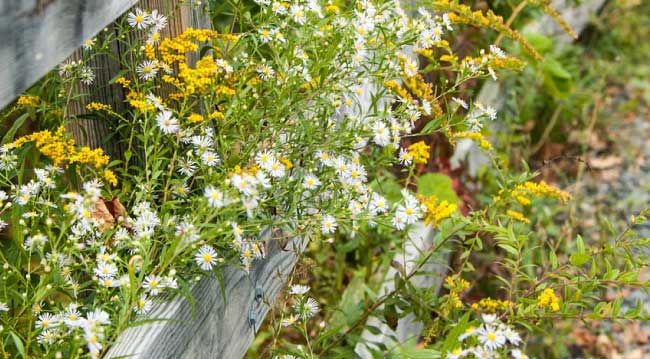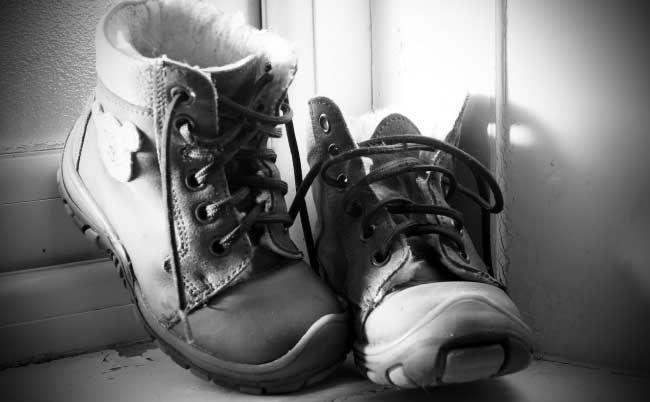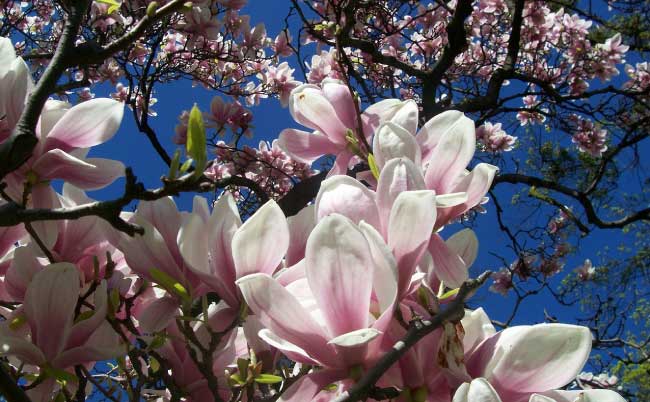Laurel Highlands Hiking Trail in June: Ohiopyle State Park by Ginny Smith.
Ohiopyle
The steady incline finally turns into a steep drop and signs seem to spring from nowhere warning trucks to go no faster than ten miles per hour. Our car rolls down the hill, slides around a left turn, and glides to a stop in “downtown” Ohiopyle with hardly any help from the gas pedal. Faded shops and houses line the streets of a small town with an outdoorsy-tourist feel. We see signs for rafting gear and bike rentals.
Opening a map obtained from the small visitor center, I traced the snaking trails of the 20,500-acre Ohiopyle State Park with my finger, double checking the route on which I was about to embark. After getting my bearings, and with Ferncliff Peninsula looming across a wide bridge, I tucked the map into my drawstring backpack with a new sense of purpose.
The high, arched sides of the bridge act both as a buffer against the rapids below and as the gateway to the Laurel Highlands mountain range. We crossed, with the Youghiogheny [yawki-gay-nee] River rushing beneath our feet, spilling over car-sized rocks into the gorge that borders one side of the peninsula.
Ferncliff Trail
Choosing the path that started closest to the river, we descended down steep stone steps to Ferncliff Trail. A canopy of light-dappled green shades the dirt trail, one of four on the peninsula. Following the direction of the rushing water, we trekked across ever-moistening ground. The first stretch of the 1.7-mile trail that loops Ferncliff Peninsula offers several easy-access points to a river view. Large rock platforms line the side of the Youghiogheny, inviting hikers to a front row seat of the best rafting action east of the Mississippi. There are fewer of these natural viewpoints as the trail stretches closer to the Youghiogheny River Gorge.
[mc4wp_form]
‘Ohiopehhla’ – White, foamy water
The park’s name sings from the rough rapids, as it comes from the Native American word “ohiopehhla,” meaning white, foamy water. A river’s rushing melody never fails to woo me. Placing our be-sneakered feet between rocks and tree roots, we climbed down steepening hills to the water’s rocky edge. Vegetation bursts out from between the rocks, overflowing from the damp forest. Several rainstorms had created a pool in a rock crater in which were swimming hundreds of tadpoles. June seemed to bring life to every nook and cranny of Ohiopyle.
We stayed close to the water’s edge, following tracks that were flanked by purple wildflowers and reedy grass growing from the sun-warmed rocks. Eventually we were stopped by the peninsula’s steep sides and jagged rocks. The trail ran somewhere further up the slope to our right. We climbed back past magnolia trees with wide, green, leather-like leaves. Arriving at the top, I stopped to take in the pure greenness before me. Plants of every hue twisted along the sides of the trail, which curved around a wide field of tall oak trees and knee-high grasses. Shafts of sunlight broke through the ceiling of leaves, and the clearing glowed with soft, radiant light.
Ferncliff Peninsula Wild Flowers
We followed the trail around the peninsula, stopping from time to time to read the simple brown signs explaining the variety of plants. The unique mix of flora makes Ferncliff Peninsula a national natural landmark and botanical reserve. The Youghiogheny’s northern flow brings seeds from Maryland and West Virginia, which thrive in the warmer, more humid weather the gorge creates. I stopped along the trail to examine budding pink mountain laurels, the Pennsylvania state flower. The pale, pentagram-shaped flowers grow in bunches along the trail and at the base of small trees on the rock platforms.
Rounding the peninsula and nearing the trailhead from the opposite side, we saw what seemed like an impossibly tall bridge spanning the river. The sight of the towering old railroad track contrasted with the natural beauty of the trail. During the railroad boom, one dollar took vacationing visitors back and forth from Pittsburgh to Ohiopyle State Park. As we hiked the last stretch of Ferncliff Trail, the idea of a sprawling resort on this land both amused and shocked me. My mind couldn’t reconcile a boardwalk and tennis courts with the green meadow and plummeting rocks. Part of the hotel still remains in the middle of the peninsula by the half-mile Fernwood Trail, a once-modern ruin lost forever to time and nature.
Images of tourists and dance pavilions faded from my thoughts as we left Ferncliff Peninsula for the Great Gorge Trail. I could glimpse the peninsula through the trees from the wide, muddy trail we were following. Now far above the river, we came across narrow creeks that trickled down the hill, some of which were bridged by short planks of rotting wood. After hiking a little over half of the 2.6-mile trail, voices and splashing began to reach our ears. Eventually we reached a bridge that crossed a much more substantial creek. Seeing a parking lot in the distance, we knew we had reached Cucumber Falls. Many of Ohiopyle’s main attractions are now accessible by car; but where’s the adventure in that?
Climbing over the wooden rail that guarded the steep steps to the bottom of the falls, we tiptoed out on rocks in the running water. Trying not to get my feet wet, I looked down over the 30-foot drop of Cucumber Falls. Families and couples were swimming in the small pool below, and climbing to and from the small cave hidden behind the falling water. We climbed down and joined them. From here we looked back up at the bridal veil cascade flowing over the rocks on which we had been standing just minutes before. I scrambled over the slippery rocks to get closer to the watery curtain, using trees growing from the rocks for balance. Their gnarly roots stretched over the ground like veins on wrinkled hands.
We left the shaded pool in search of the Meadow Run trail, following the creek that flowed from Cucumber Falls toward the Youghiogheny River. Looking back over my shoulder, an image of the pool – a beautifully simple painting of nature – imprinted itself on my mind. As the tune of this graceful cascade grew fainter, the trail we were now following became less distinct. We began to wonder if we were going in the right direction. We wandered through low trees and climbed up steep slopes, with only rocks and branches for assistance. Thankfully, after almost an hour, sounds of civilization met our ears once more.
Meadow Run Natural Waterslide
Rounding a jagged corner, we found the source of the noise. It was Meadow Run, a well-known natural waterslide. Another public access point, the slides swarmed with visitors in a variety of clothing, from bathing suits to sopping jeans and running shoes. Kids took turns enjoying nature’s amusement park, letting the current carry them away down the smooth rocks. Sitting to watch the spectacle, I wondered how different it was to see Ohiopyle only through the small glimpses afforded by car. How much did these people miss by driving to the parking lot, sliding and swimming for an hour, and hopping back into the car? Did they notice the way the sun danced on the wet rocks, giving its own little light show? Did they see the water disappear around the bend beyond the natural waterslides and wonder where it led?
By the contented looks on the visitors’ faces, it didn’t seem that they yearned for more than a few minute’s entertainment. But we did, so around the curve we went, attempting to find the Meadow Run Trail again. We continued along the trail as it grew ever-more challenging. There was little sign that anyone had recently trodden this path before us. The trees bowed over us, and the yellow blazers that marked the path were lost among the bent bark and twisted branches. The knotted ceiling became so tight and low that we had to crouch to continue. After emerging from the back-aching tunnel, we followed the water along steep, cliff walls, navigating over rocks of every imaginable size.
We climbed to the top of a flat rock in the middle of the current to rest. The water stretched before us and ran away behind another curve. With the sun getting low in the sky, I knew that we would have to leave that bend undiscovered. The cool breeze rustled the trees, and joined the tumbling water to make a natural symphony that played for our ears only. Feeling that the car in little downtown Ohiopyle was worlds away, we prepared ourselves mentally and physically for the return journey.
Ginny Smith



